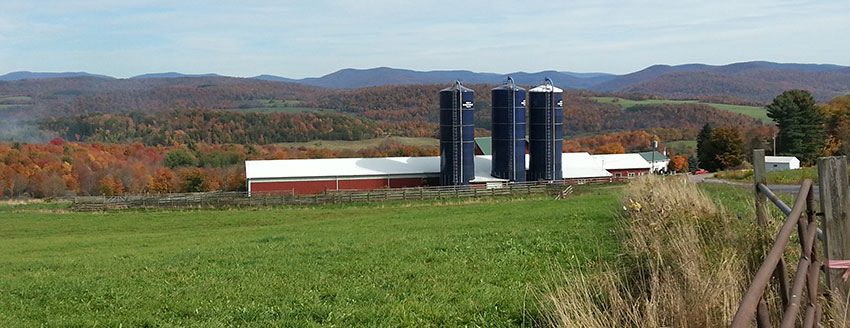Planning

Farm Best Management Practices
Best Management Practices (BMPs) are conservation practices meant to prevent or reduce the amount of pollution generated by non point sources (in this case agriculture) in order to protect and enhance water quality. Many BMPs used in the New York City watershed are standard practices established by the USDA Natural Resources Conservation Service. The Watershed Agricultural Council also develops and implements innovative BMPs based on scientific research and field experience.
BMP Prioritization (slides+audio): Watershed Ag Program & Your Future
With slide presentations, Agricultural Program staff explain how BMPs are prioritized, when participants can expect work to be done, and the importance of the Annual Status Review.
Part III: Annual Status Review & Whole Farm Plan Revision Process
Part IV: Annual Workload Development
Whole Farm Planning
Whole Farm Planning is a holistic approach to farm management used to identify and prioritize environmental issues on a farm without compromising the farm business. Potential risks to the water supply are identified and addressed through careful structural planning to reduce or avoid the transport of agricultural runoff into farm streams. This is important because this water eventually flows into New York City’s water supply reservoirs.
The process begins when a farmer signs a voluntary participation agreement with WAC and agrees to develop a Whole Farm Plan in conjunction with a Planning and Implementation Team. Each team is multidisciplinary, and may have representatives from the USDA Natural Resources Conservation Service, Cornell Cooperative Extension and county Soil and Water Conservation Districts.
As part of the Whole Farm Plan, Best Management Practices (BMPs) are selected and implemented by using a multiple barrier approach starting with the source (i.e., barnyard water) and moving to crop fields and the stream corridor.
Potential pollutants are categorized and prioritized:
I. Parasites & Phosphorus: Animal Waste Storage
II. Pesticides: Storage Facilities, Mixing/Loading Areas
III. Phosphorus: Fertilizer Storage
IV. Parasites: Animal & Manure Management
V. Nutrient Management
VI. Nutrients: Concentrated Sources
VII. Sediment: Diffuse
VIII. Sediment: Concentrated
IX. Pesticides: Field & Animal Application
X. Fuel Storage
XI. Other Materials
By successfully integrating traditional and innovative farm management approaches into a flexible and wide-ranging strategy, this program is unique in its ability to prevent agricultural pollution while also protecting the economic viability of farming.
How Does It Work?
Creating and Implementing a Whole Farm Plan
• A Planning and Implementation Team visits the farm to identify and assess potential sources of pollutants, using a custom Environmental Review/Problem Diagnostics tool.
• The Team reviews technical and financial options with the landowner/farmer and drafts a Whole Farm Plan (WFP-2).
• The draft WFP-2 is presented to the Watershed Agricultural Program peers and managers for review. The landowner/farmer signs the Participation Funding Agreement (WFP-1) and Whole Farm Plan (WFP-2) agreeing to implement their “plan” following BMP Prioritization process and funding availability.
• The final WFP-2 is presented to the Agricultural Program Committee for approval or for information only.
• Program staff provides continued support to the landowner/farmer to ensure the Plan’s long-term success.
